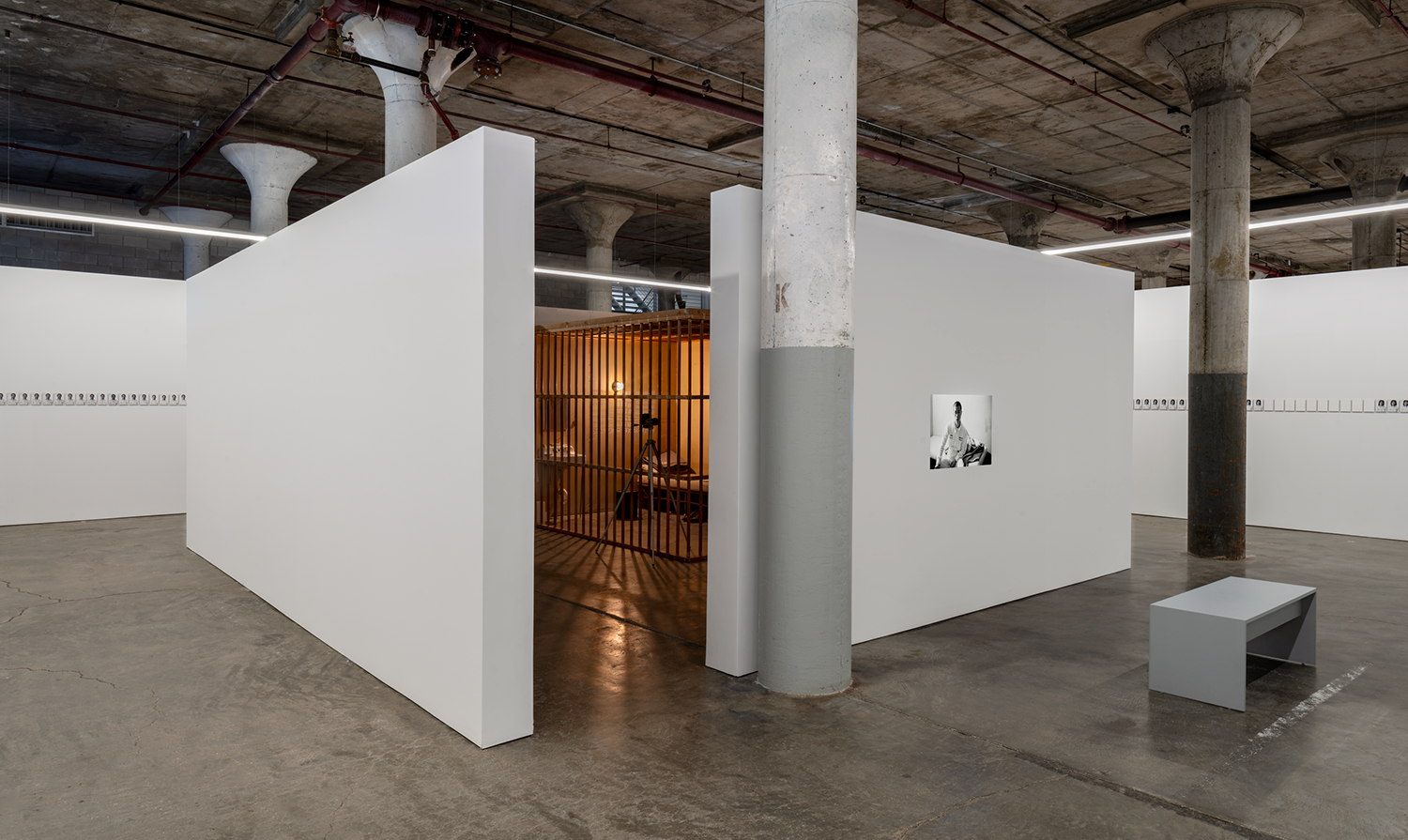Revisiting Dia Beacon’s Iconic Lower-Level Gallery
Dia Beacon’s basement before renovation, 1999. Photo: Michael Govan
Since its founding, Dia Art Foundation’s mission has been to advance, realize, and preserve the vision of artists. Part of what sets Dia apart is dedicating entire galleries to an artist’s work, and the scale of Dia Beacon’s lower-level gallery has allowed us to showcase some of our most iconic artists in ways they have never been shown before. In contrast to the museum’s sunlit upper level, the 30,000-square-foot concrete basement gallery is dark with towering pillars, creating an immersive experience for large-scale art installations. Over the years, this space has hosted major works by artists such as Carl Craig, Dan Flavin, Joan Jonas, and Steve McQueen. Currently occupying the space is Tehching Hsieh: Lifeworks 1978–1999, which opened to the public at Dia Beacon on October 4, 2025.
Experience the first retrospective of Hsieh’s radical performances Friday through Monday, 10 am to 4 pm. The exhibition covers 1978 through 1999, a period in which Hsieh enacted his five iconic One Year Performances followed by Tehching Hsieh 1986–1999 (Thirteen Year Plan). Book your tickets at diaart.org/tickets.
Take a trip down memory lane with us and explore Dia Beacon’s transformative lower-level gallery through the artists and exhibitions that came before.
Tehching Hsieh: Lifeworks 1978–1999
Opened October 4, 2025
Tehching Hsieh, One Year Performance 1978–1979 (Cage Piece), 1978–79. Tehching Hsieh: Lifeworks 1978–1999, installation view, Dia Beacon, New York, 2025–27. © Tehching Hsieh. Photo: Bill Jacobson Studio, New York
Currently occupying Dia Beacon’s lower-level gallery is an exhibition by Taiwanese American performance artist Tehching Hsieh. Tehching Hsieh: Lifeworks 1978–1999 is the first retrospective of the artist’s radical performances. The exhibition covers a period in which Hsieh enacted his five iconic One Year Performances followed by Tehching Hsieh 1986–1999 (Thirteen Year Plan). For each of the yearlong works, Hsieh lived locked in a wooden cage; punched a time clock in his studio every hour, on the hour; lived outside, navigating New York’s streets without shelter; was tied to another artist, Linda Montano, by an eight-foot rope; and refrained entirely from making, viewing, reading about, or speaking of art, respectively. During Hsieh’s final and longest performance, the artist made art but withheld it from the public for 13 years. The exhibition design was adapted for Dia Beacon and spatially conveys the time endured for each performance as well as in between them. The exhibition is on long-term view, plan your visit today.
Steve McQueen
May 12, 2024–May 26, 2025
Steve McQueen, Bass, 2024. Installation view, Dia Beacon, New York, 2024–25. © Steve McQueen. Photo: Bill Jacobson Studio, New York
In a career spanning over 30 years, artist and filmmaker Steve McQueen has continually investigated themes such as history, class, and race, through film, photography, and installation. Bass (2024) featured 60 ceiling-mounted lightboxes that changed color ever so gradually to journey through the complete spectrum of visible light, alongside a soundscape that was made entirely with bass instruments and reverberated off the gallery’s concrete surfaces. Bass used only the most basic, structural elements of film—light and sound—to effectively sculpt Dia Beacon’s lower-level, transforming the 30,000-square-foot gallery into an immersive environment that goes beyond the conventional frame of cinema.
Joan Jonas
October 8, 2021–March 13, 2023
Joan Jonas, The Shape, the Scent, the Feel of Things, 2004. Installation view, Dia Beacon, Beacon, New York, 2021–23. © Joan Jonas/Artists Rights Society (ARS), New York. Photo: Bill Jacobson Studio, New York
This exhibition brought together three collection works by Joan Jonas—the large-scale multimedia installation The Shape, the Scent, the Feel of Things (2004), which was commissioned as a performance for Dia Art Foundation in 2005–06, and two then–recently acquired works, Stage Sets and After Mirage (Cones/May Windows) (both 1976). These three works presented a compelling trajectory for Jonas’s career from the pivotal year of 1976, when she shifted her focus to performance installations, combining nonlinear performance and video.
Hear from the artist herself in this video created to capture the diversity of works displayed in this exhibition.
Dan Flavin
March 6, 2020–March 13, 2023
Dan Flavin, untitled (to you, Heiner, with admiration and affection), 1973. Installation view, Dia Beacon, New York. © Stephen Flavin/Artists Rights Society (ARS), New York. Photo: Bill Jacobson Studio, New York
Dan Flavin’s untitled (to you, Heiner, with admiration and affection) (1973) consisted of square, fluorescent-green units placed side by side at two-foot intervals vertically bisecting Dia Beacon’s lower-level gallery until the space was clearly blocked. This piece was a part of Flavin’s series “barriers” encompassing freestanding fixtures that physically block a passageway or segment of space with light. The dimensions of this site-responsive installation are variable and aim to disrupt the architecture of an exhibition space. The green barrier draws attention to the complicated relationship between the optical and physical elements of the artist’s practice. Flavin brings the viewer’s awareness to color, space, and the way they navigate this experience into combination.
More of Dan Flavin’s works remain permanently on view at Dia Bridgehampton. Explore his works through this short film or visit in person.
Carl Craig: Party/After-Party
March 6, 2020–July 25, 2021
Carl Craig: Party/After-Party, installation view, Dia Beacon, New York, 2021–21. © Carl Craig. Photo: Bill Jacobson Studio, New York
In 2020, Dia commissioned acclaimed Detroit-based techno DJ and producer Carl Craig to create a sound installation for Dia Beacon in dialogue with the unique architecture of the space. Party/After-Party (2020) marks his first commission for an art institution and culminates a five-year-long engagement with Dia. This work reimagines Dia Beacon’s lower level, creating a sonic environment that is anchored in the site’s manufacturing history as a former Nabisco packaging factory and recalling a techno tradition of reclaiming industrial spaces for radical experimentation. The work addresses both the euphoria of the club environment and the loneliness that follows this collective experience.






